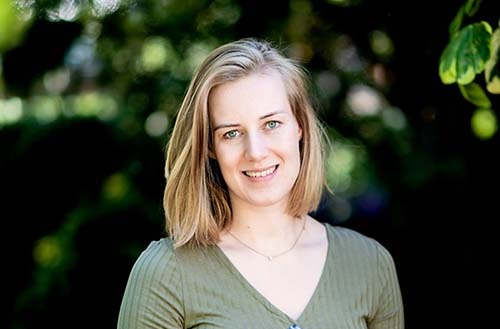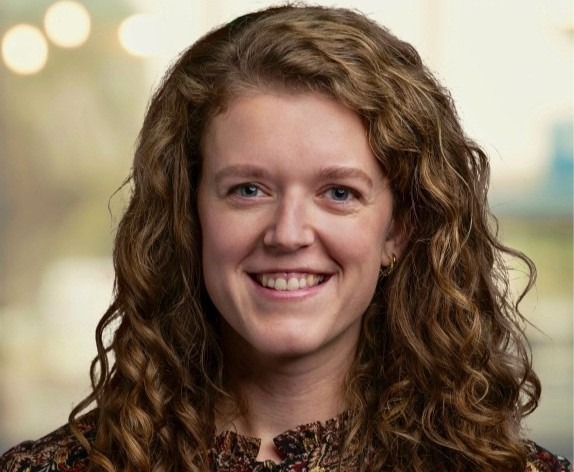‘Societal aspects are just as important as technology’
The subsurface could play a crucial role in the energy transition. But how can we ensure that we balance energy needs with environmental and societal considerations? The symposium ‘From Underground to Mainstream’ will bring together experts, stakeholders, and researchers from various disciplines to explore the role of the underground in the energy transition. The event is scheduled for 9 April and is co-organised by the Wubbo Ockels Schools for Energy & Climate.
Text: Jelle Posthuma
Johannes Miocic, Assistant Professor of GeoEnergy at the University of Groningen, is one of the keynote speakers at the symposium. He will discuss the importance of the underground in the energy transition. The subsurface can contribute in three ways, he explains: through energy production using geothermal energy, through energy storage (such as hydrogen), and through CO2 storage to reduce emissions.
According to Miocic, decentralised energy production and storage are the future of the energy transition. 'People often emphasise electricity, but innovations in heat have a much bigger impact.' Geothermal energy can play an important role in heat production because it can be generated almost anywhere on the planet.
Challenges and risks
Energy production through geothermal energy is promising, but high costs remain a barrier. 'TU Delft connected its campus to geothermal energy, with drilling alone costing €15 million,' Miocic explains. CO2 storage faces a similar issue: as long as CO2 prices remain low, there is no financial incentive to invest.
In addition, subsurface use always involves uncertainties, as the researcher continues. 'You can only determine the exact properties of the subsurface after drilling,' Miocic stresses. His own research focuses on improving predictions of subsurface properties. 'There is a great variety in the different earth layers. This is something I am trying to better understand and predict with my team.’
Although technologies are available to map the subsurface, risks still remain. One of the biggest concerns is 'induced seismicity,' or earthquakes caused by human activity. 'This is, of course, a particularly significant issue in Groningen. We want to prevent earthquakes at all times.’




Public perception
The history of earthquakes in Groningen might have influenced the public perception of (new) underground projects. Even if the probability of human-induced seismicity is very low, public perception may prevent projects from proceeding. As Miocic suggests, addressing this issue requires not only technological advancements but also the involvement of social sciences to better understand public perception.
Bas Ankoné, PhD researcher in the Department of Environmental Psychology and organiser of the symposium, agrees. His research focuses on policy acceptance of activities that happen in the deep underground. ‘The topic is often viewed through a technical lens, but the societal aspect is equally important. We've observed that several research institutes are addressing this issue, which is why we aim to use the symposium to bring people together and build bridges.'
Ankoné focuses on public perceptions, particularly in the field of geothermal energy. According to him, the history of Groningen seems to have had a significant impact on both public perception and policy. ‘Several issues arose in Groningen, and that appears to have affected things. As public perception changes, local governments seem more hesitant to do anything in the underground too. As such, Groningen appears to have influenced broader policy decisions regarding the use of the subsurface in the Netherlands.’
This also applies to geothermal energy, as the PhD researcher explains. 'People only have a vague idea of what happens below the ground. Associations with Groningen earthquakes might lead to fears that the same could occur with geothermal energy. How people perceive previous above-ground damage could thus influence how they look at future underground projects.
The PhD researcher therefore stresses the importance of broad participation in decision-making on use of the subsurface. 'Often, public participation is used as a means to gain support after the decision has already been made. I’m not sure whether that is the right order. If we indeed want to shape the future energy system together, more insights into people’s own preferences for how they want to be involved are needed first.' Especially with geothermal energy, public participation is essential, Ankoné explains. 'You can't do geothermal without public involvement. Wherever you drill into the ground, the heat must also be utilized.'
Embedding the subsurface
Marit Sprenkeling and Tessa Bosch of TNO also focus on the societal embedding of subsurface use. At the symposium, they will give a keynote on a methodology for subsurface projects, with an emphasis on the societal embedding of technologies. There are four main dimensions of subsurface use, Sprenkeling explains. 'These dimensions allow us to summarize all social aspects in one framework.'
The first dimension is environmental impact, encompassing physical, social, and spatial aspects. The second is engaging the public and other stakeholders. 'For example, is there support for the project?' The third dimension concerns the market and financial resources. 'The use of the subsurface for the energy transition is not yet a mature market. That’s why governments have to step in with subsidies. The question arises: who bears what risks?' Finally, there is the policy framework of laws and regulations, such as the Mijnbouwwet and the Omgevingswet.
Communication is key
Above all, Sprenkeling and Bosch emphasize the importance of an interdisciplinary approach to integrally address the various dimensions. Miocic also highlights the importance of collaboration. A key issue, he says, is how to communicate risk. 'If a geoscientist says the risk is very small, how do you translate that into a clear and convincing message for the public?’
He cites CO2 storage as an example. It is technically feasible, but due to poor communication about the risks in the past, projects has been cancelled, Miocic states. ‘If we want to use the underground, we need to communicate better about it.' Ankoné agrees. 'It’s about communicating scientific expertise to a broad audience. In other words, making the underground mainstream.’
The symposium From Underground to Mainstream: Leveraging the Subsurface for a Successful Energy Transition takes place on Wednesday, April 9, 2025, from 10:30 to 17:00 at the House of Connections, Groningen. You can register on the website of the Wubbo Ockels School for Energy & Climate.
| Last modified: | 04 April 2025 1.49 p.m. |
More news
-
24 March 2025
UG 28th in World's Most International Universities 2025 rankings
The University of Groningen has been ranked 28th in the World's Most International Universities 2025 by Times Higher Education. With this, the UG leaves behind institutions such as MIT and Harvard. The 28th place marks an increase of five places: in...
-
05 March 2025
Women in Science
The UG celebrates International Women’s Day with a special photo series: Women in Science.
-
16 December 2024
Jouke de Vries: ‘The University will have to be flexible’
2024 was a festive year for the University of Groningen. In this podcast, Jouke de Vries, the chair of the Executive Board, looks back.

